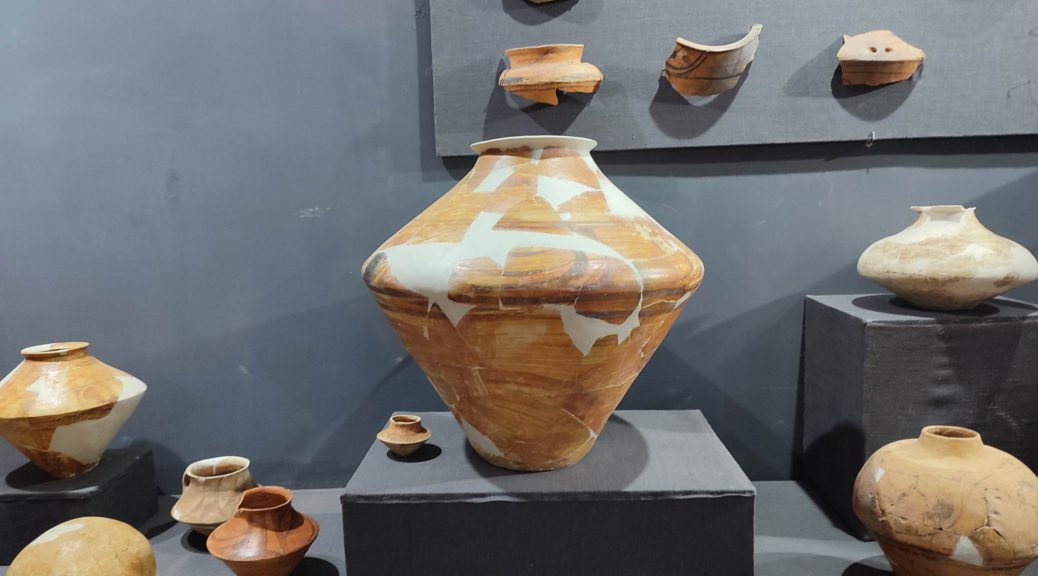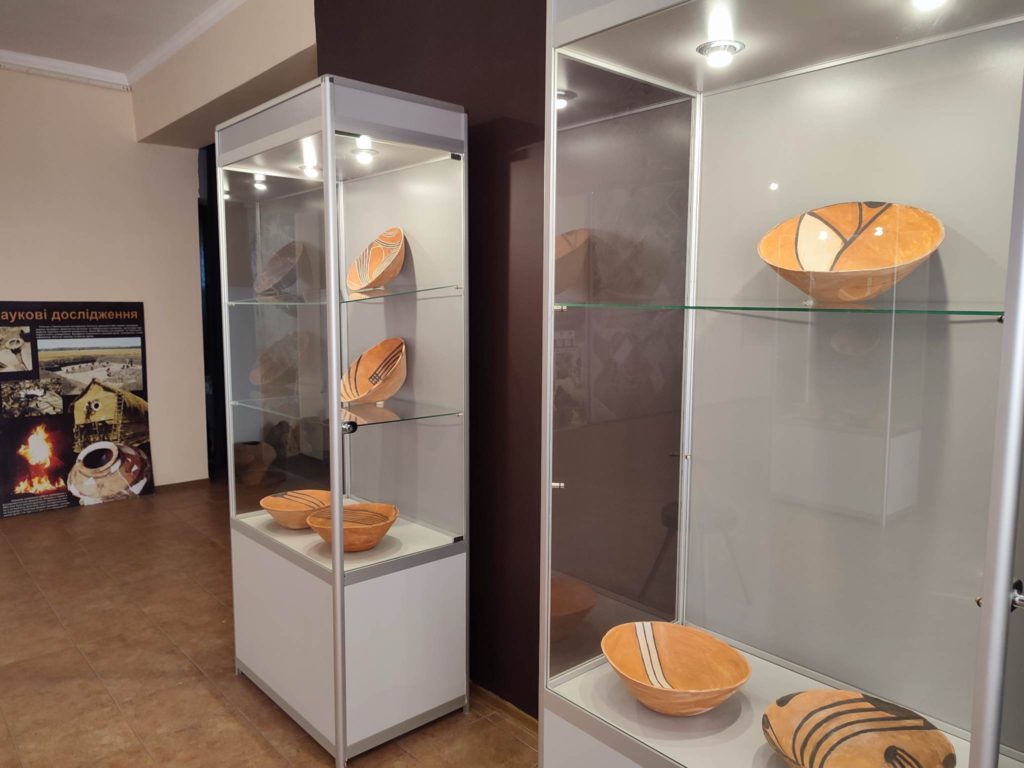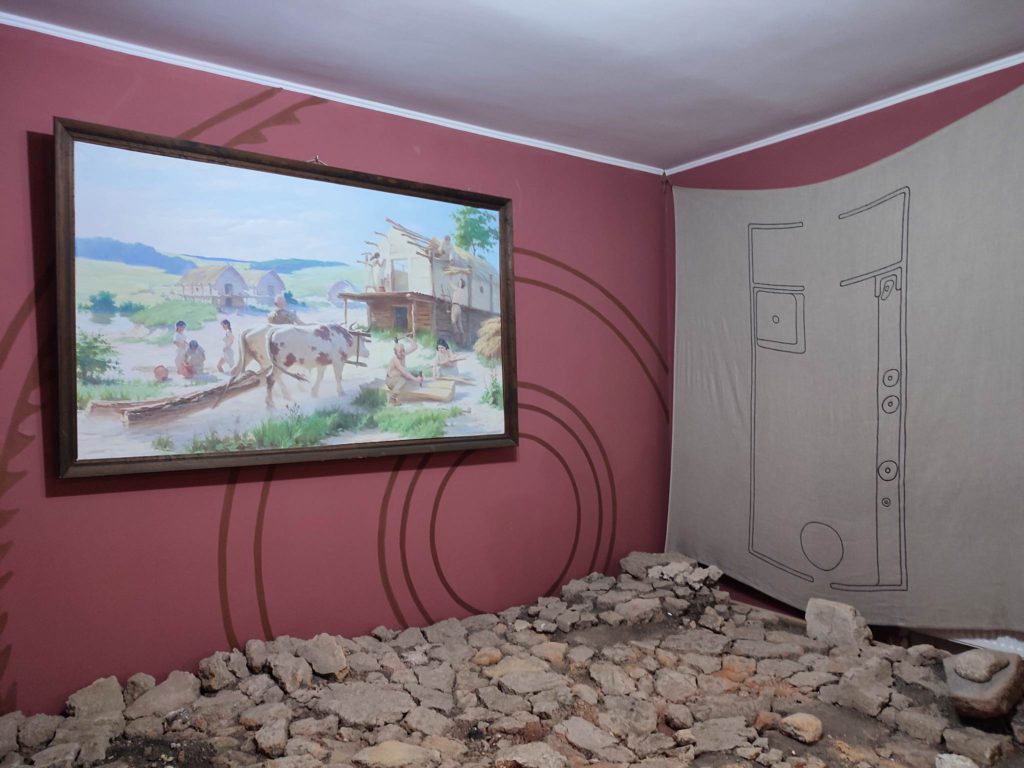
Secrets of Ancient Trypillya Culture
The best museum, dedicated to the unique ancient Trypillian culture, is located in Lehedzyne village, Cherkasy region (230 km south of Kyiv). The Trypillian culture existed during the Neolithic and Eneolithic periods in Ukraine, Moldova, and Romania from the 6th to the 3rd millennium BC. It was formed and existed before the Sumerian civilization and Ancient Egypt. We do not know what the Trypillians called themselves. The name “Trypillian” derives from the village of Trypillia in the Kyiv region, where archaeologist Vikentii Khvoyka conducted archaeological excavations in the 19th century. In Romania and Moldova, it was named after the village of Cucuteni. There are more than 30 museums where you can see samples of this unique culture in Ukraine. For a fascinating insight into Trypillian culture, a visit to the village of Lehedzyne is essential.

Historical Reserve “Trypillian Culture”
Why was the historical reserve created in Lehedzyne? In 1981, near the villages of Lehedzyne and Talianky, archaeologists discovered a Trypillian settlement with more than 1500 buildings on a territory of 450 hectares. Scientists conducted excavations for several years and decided to create a museum. Having been opened in 2002, the reserve quickly became a well-known historical and cultural center in Ukraine.
I first visited this village in 1998 while studying history at the university. After the second year, we had to undergo an archaeological practice. There were two options such as excavating a Scythian mound in the Mykolaiv region or a Trypillian dwelling in the Cherkasy region. Both locations were interesting, but I chose Lehedzyne. Since then, it has become one of my favorite places in Ukraine. Every time I visit the reserve, we reminisce about our student days: “Spending two or three weeks of summer vacation at an archaeological site is really cool!” Students and volunteers can participate in archeological excavations in the summertime.

By the way, nowadays the reserve offers an opportunity to visit the archaeological site with an excursion where you can feel the romance of archaeology. If you want to know how ancient people lived, you can book an overnight stay in a house that is a restored copy of a Trypillian dwelling. For a comfortable night, it is advisable to bring futons or sleeping bags. You can book an excursion, see unique exhibits such as dishes, tools, and clay figurines, and watch films about scientific research on Trypillian culture in the local museum.
The head of the reserve Trypillian Culture Vladyslav Chabaniuk, a former history teacher, tells us about activities in Lehedzyne village (video below).
10 Interesting Facts about Trypillian Culture
- The Trypillians built large proto-cities where they lived for about 100 years and then moved to another area to find better places and fertile soils.
- Trypillians built two-story dwellings made of wood and clay.
- Social equality prevailed in society because archaeologists have not found any administrative buildings.
- Trypillian crop rotation system is the basis of modern agriculture.
- Trypillian culture is called the “culture of painted ceramics”. Archaeologists found a variety of ceramic products for different purposes.
- Trypillians wove cloth and wore woven or crocheted clothes.
- They had looms, stonemasons, pottery workshops, furnaces, and melting furnaces.
- Among the found artifacts are binocular vessels, the purpose of which is still unknown.
- Trypillians grew wheat, barley, and oats, bred cattle, sheep, goats, and horses. They plowed with a plow, reaped with sickles, and used carts and sleds.
- The radial method of settlement development with streets and squares is still used in urban planning.

If you are interested in booking the Secrets of Ancient Trypillya Culture tour, please be aware that the trip lasts the entire day. The museum is located 3.5 hours away by car from Kyiv. Local museums do not have English-speaking guides, so it is necessary to book a guide-interpreter from Kyiv. For more information and to book the tour, please contact me via email: guide.kiev.ukraine@gmail.com or follow Instagram Tour Guide Kyiv Ukraine